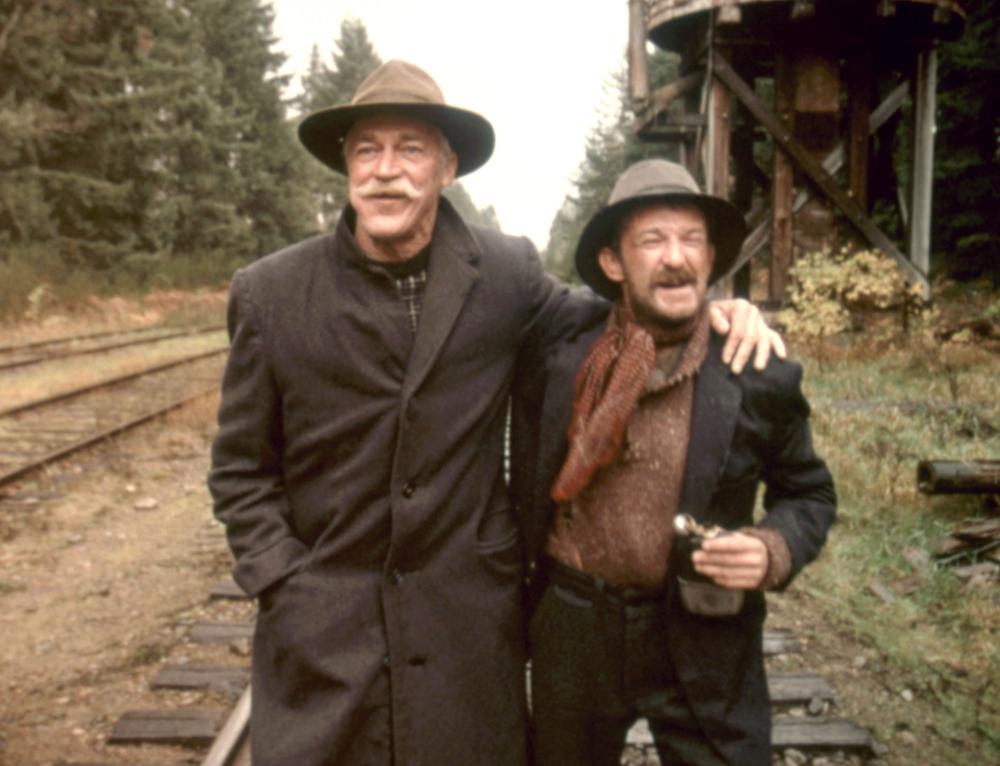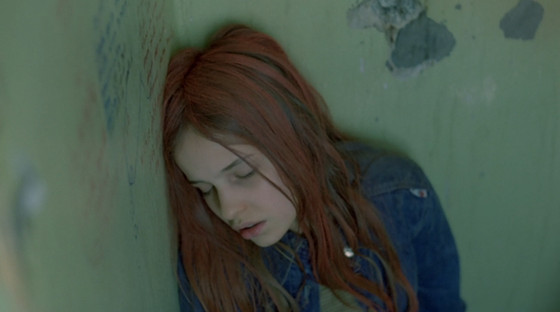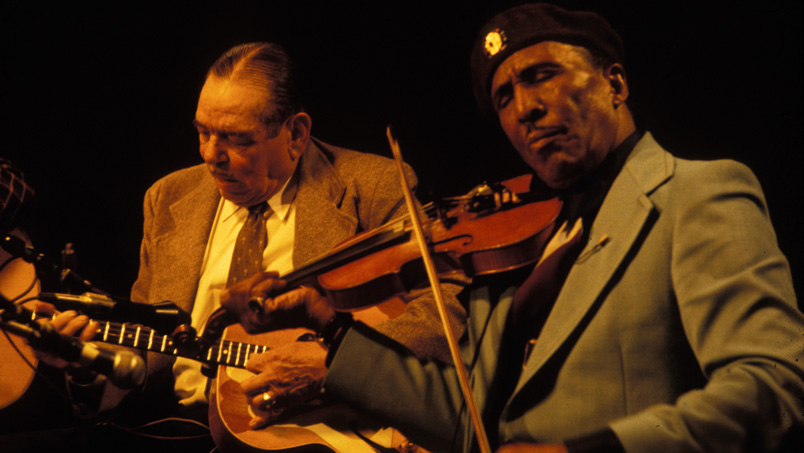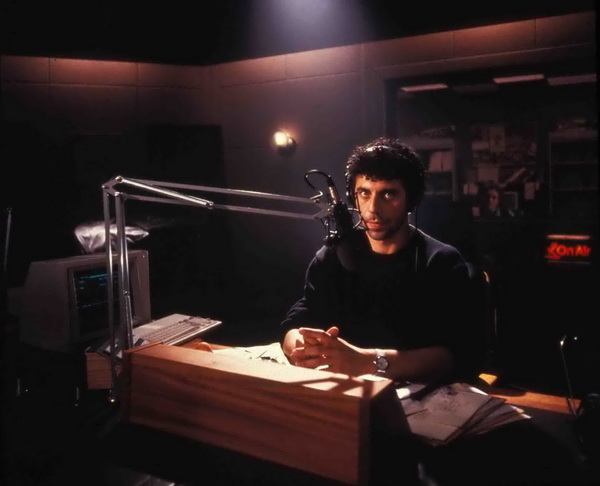
The 80’s was the video store era. The more indie, the less chain-y, the better. Think San Francisco’s Le Video ad LA’s Vidiots. This is where one went to crate dig for the off beat, the crass, the not-quite sure what the hell it is, the grand artistic statements, or the missed theatrical run. In some instances, the video store made the names of some contemporary classics, The Shawshank Redemption immediately comes to mind.
The annoying revival house cinephile got replaced by the annoying video store clerk, but more often than not, this person will have watched everything that came in to the loading dock at least once. So you’d get turned onto Attack of the Killer Tomatoes, Obscure Object of Desire, Amazon Women On The Moon, and What About Bob?, all from the same expert. Spittle aside, you did OK listening to his choices. The video store brats are some of the most critically acclaimed and expensive filmmakers working today. Who knows if we would have had Asteroid City without a video store full of Senji Suzuki, Umbrellas of Cherbourgh, and A Bande Apart? Video stores were also a great way for studios to recoup from their flops.
Additionally, independents producers could sell the video rights for the cash to shoot the actual film (and sometimes feed the crew). But the video store was not just for nerds. For those of us who regularly attended revival houses, and were and are in the mood for something more Taviani and less Troma, there were quite a few gems in the Eighties that flew under the radar, and were kept alive by the video store. Now, hopefully they are kept alive by blogs and podcasts. But long live the video store, there was something truly special about them.
When we think of the 80’s gems, we think of the usual suspects, this list has virtually none of the 80’s fingerprints or DNA. These are all stand-alones in style and sensibility. These ten entrants are mostly anti-blockbusters. None of them saw a great deal of financial success in their theatrical runs, except The Color of Money which has its own bizarre trajectory, and Christiane F, which had the highest ticket sales in German history at the time, but all are equally worth watching if discovery is your thing. Enjoy!
1. The Grey Fox (1982, dir. Philip Borsos)

The Grey Fox tells the true story of Bill Miner (Richard Farnsworth), one of the last great stage coach robbers who, after a 33 year stint at San Quentin is released into the twentieth century. Out of prison, he can’t seem to quite make it in the straight world, so he goes back to his wicked ways, except while he was in the Q, the steam engine took over the world. He has no choice but to again hire himself out to his old crime boss/broker. He gets a henchman, Shorty, and they begin to rob trains. Bill has a alias so he can live quasi freely, and with his new digs inside of British Columbia he falls I love with Kate Flynn, a free spirited spinster, who is a photographer and union advocate. Miner seems to like women with more than a little spunk to them. But naturally, Bill’s past and current exploits catch up to him.
There are several got out of prison where they are trying to fit into the modern world films (Straight Time, etc.) but The Grey Fox has a certain parlor charm to it. It’s a salute to the small old school ways that soon will be vanquished and never seen again. Farnsworth played a similar role in Lynch’s Straight Story, but The Grey Fox was there first.
The Grey Fox made quiet an impact in its first theatrical run. There is a certain quietude in The Grey Fox that audiences were yearning for, an anti-blockbuster, films that reflect our quieter moments. The Grey Fox brims over with nostalgia, but not a painless candy striped pastiche, but a somber realization of even eras being temporal and fleeting. There is scant exposition and very little dialogue. The quiet dramas are played out over stunning natural vistas. The Grey Fox is more engrossing with quiet than with the bombast which typified 80’s movies. We see and feel the influence of the great silents all over the The Grey Fox, it reminds us once again that eras are temporal and fleeting.
2. Christiane F (1981, dir. Uli Edel )

This is the greatest German film ever made that no one knows about. Maybe it’s sensibilities are too harsh for this generation, but it is a Gen X masterpiece. The 80’s are imfamous for youth-oriented films that portray youth through a lens where we parse our signifiers (ie John Hughes films) and wallow in the music, the clothes, and the stereotypes. Not so with Christiane F. Christiane F. who is landscaped by kids who are either runaways or throw-aways. Most are addicted to heroin; 13 year old Christiane’s boyfriend Detlef turns tricks at Zoo Station. Out of all of the kids at club Sound and Zoo Station (a notorious Berlin train station which was also a meat market and junkie hangout) Christiane has the most stable home life, living in a high rise with a single mother, and a younger sister who moves out at the first opportunity; a father is neither seen or mentioned. But at least Christiane has a place to go.
Christiane becomes a junkie herself, slowly but surely-she starts with snorting, then moves to the needle. To subsidize her habit, she has to turn tricks. Her tricking gets more and more advanced. She and her boyfriend try and go cold turkey, and fail. Her friends start dying. She sells her stuff to support her habit, she steals from her mother. Two of her friends die from overdoses. Her world keeps spiraling downwards. She tries to kill herself, but thankfully recovers
This 13 going on 27 tale is perhaps the best heroin movie after Panic In Needle Park. It was shot almost entirely on location with mostly available light, thus making heroin addiction as appealing on film as it is in real life. Not for the faint of heart, but neither was the Zoo Station. Most of the soundtrack is Thin White Duke era Bowie- there is a Bowie concert scene as well. Upon release Christiane F. took in the most ticket sales in German movie exhibition history. At the same time audiences were horrified by the portrayal of teen sex work. The gritty realism comes partly from Uli Edel shooting at Zoo Station, and partly that he hired a documentary camera man to follow the young actors whatever happens.
3. Louie Bluie (1985, dir. Terry Zwigoff)

This is flat out an amazing film. It profiles the multi-talented musician and raconteur Howard Armstrong. It’s Crumb director Terry Zwigoff’s first feature and it is filled to the brim with magical moments. Armstrong does all of the voice-over narration and the interviews with his former bandmates, all from the great era of black string bands including Big Bill Broozy and Memphis Minnie both whom he played with.
Zwigoff’s tribute works and works amazingly because we can feel that Zwigoff let Armstrong take the wheel for most of the shoot, which turns out to be the best choice, and more crucially, the choice of a seasoned director, which at the time, Zwigoff was not. Louie Bluie is a profile but succeeds more as a portrait of an overall philosophy. At the same time, Armstrong does not come across as overbearing, mainly because he is funnier than hell and can play the living daylights out of the mandolin and the fiddle.
The impromptu jams with Armstrong and former bandmates like Ted Borger are jaw dropping, Armstrong’s stories are the double over laughing kind. The scene where Armstrong recalls as a boy reciting a poem which includes the lines “…a woodpecker wanted to peck wood because his pecker was hard” will cause you to double over and catch your breath much like the lady Armstrong is telling the story to. Maybe not a lot of people saw Louie Bluie, but The Louie Bluie Festival is held each year at Cove Lake State Park near Armstrong’s childhood home of LaFollette, Tennessee, and celebrates his music and legacy. Louie Bluie is essential viewing; ask anyone who’s seen it.
4. Vernon, Florida (1981, dir. Erroll Morris)

Erroll Morris is a complicated human being. But he gave us one very simple thing that “changed everything” :his of interviewing technique. It goes something like this- people hate silences, they will talk just to fill in the void, and with a little patience, they will talk and more often than not reveal their true selves. One can see the beginnings of this in his masterpiece Gates of Heaven, and again in Vernon Florida, which followed. Interview subjects look oddly at the camera and wonder if they should be speaking now. More often than not, they do. It’s like a stream of consciousness novel, except it’s someone talking on film.
Vernon Florida feels like you have lost your way into a town or community no one’s really heard of or pays much attention to, and you spend enough time there for the local characters to reveal themselves. And that’s exactly what Morris and team did in Vernon, Fla. This film was and is a favorite among stoners; there is so much to laugh at, and ultimately we’re laughing at ourselves, because deep down, if you remove all the trappings of “modernity,” we are all provincial backward weirdos.
5. Talk Radio (1988, dir. Oliver Stone)

Perhaps the least Oliver Stone film Oliver Stone ever made and the least Oliver Stone film you will ever see. For Kammerspiel, and filmed play, director Stone doesn’t immediately come to mind. But compelling material, an adult’s eye view of the moral complexities of the world, and subjects which dare not speak their names is Stone all the way. And casting John C. McGinley. Talk Radio is a play by Eric Bogosian and Tad Savinar based on Alan Berg, a fiery radio call-in talk show host who was shot by a white supremacist in Denver, CO in 1984. Eric Bogosian takes his monologist arsenal and crafts a scary, distant but engrossing radio personality Barry Champlain preaching a love/hate with the rest of the world.
Watch for a star turn by Michael Wincott as a Steven Tyler knockoff who weasels his way into Berg’s studio and puts the gotcha moment on air- Berg’s medicine put back onto the wizard. The tension in the film is the intentions of his callers- are they violent psychopaths, empty vessels, or decent people, or all three rolled into one? Look out for the caller who offers soup to Champlain, and how Champlain tries to figure out where this guy is coming from, what’s his angle? Maybe he doesn’t have one, but Champlain wouldn’t know. He has been at this for too long to know the difference.